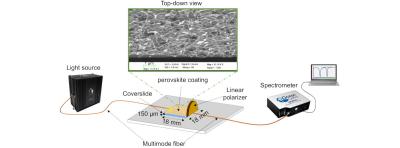Researchers from Spain's Public University of Navarra and Rey Juan Carlos University have used perovskites to create lossy mode resonance (LMR) devices, which are devices that act like super-sensitive detectors that can pick up even the slightest changes in their environment.
The key to making LMR devices work is choosing the right material for a thin film. Perovskites have unique properties that allow it to generate LMRs, which are like 'sweet spots' where the material interacts with light in a special way. These sweet spots can be fine-tuned by adjusting the thickness of the perovskite film, among other parameters.
When a perovskite coating is deposited on planar waveguides, and light passes through this device, the perovskite layer interacts with the light, creating these LMRs. The researchers found that by changing the thickness of the perovskite layer, they could create different LMRs at various wavelengths of light.
These LMR devices can sense a wide range of parameters. They can let us know if the air is humid or dry, or if there are specific chemicals in the environment. They can even detect changes in temperature, pressure, or the composition of a liquid.
Perovskite thin films have been obtained by means of the spin coating technique and their presence was confirmed by ellipsometry, scanning electron microscopy, and X-ray diffraction testing. The LMRs can be generated in a wide wavelength range and the experimental results agree with the theoretical simulations. Overall, this study highlights the potential of perovskite thin films for the development of novel LMR-based devices that can be used for environmental monitoring, industrial sensing, and gas detection, among other applications.


